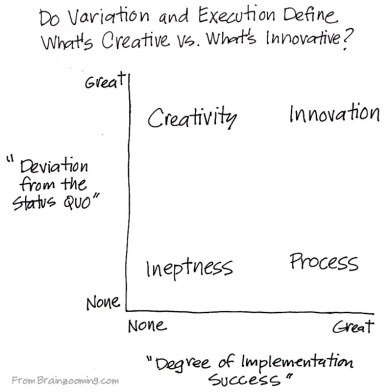Tags
Most of the people I know –or do not know- use creativity and innovation interchangeably when they want to refer to new ideas, technology, design, product or service. If you ask a random person about the difference; he or she may not know or even may not care. We all would agree on the word “New” as one of the first words –if not the very first- that could jump to your mind when you think about either innovation or creativity, yet what comes after the “new” part is what actually matters. Here is why: Ask yourself how many ideas you generate every day, every hour or even every minute, Ten? Hundreds? More? Ok, they are not all “wow” ideas, but they are still ideas. To make them great ideas, they should be different and applicable. Freeing your mind, practicing to unlearn common practice and practicing to be original when possible, would be the first step toward unleashing the “creative you” and boost the flow of crazy ideas of your mind, in which others might see them as brilliant ones.
Let’s assume that you agree with me, now draw a picture of a pyramid of three levels in your mind, the base is everybody, the middle level is for creative people, the highest level, is definitely reserved for those whom I call “innovative” .
Antoine Ego, a fictional character said once: “Not everyone can become a great artist; but a great artist *can* come from *anywhere”. That should tell you where I am going and what I am trying to get across with this endless introduction. Here is the takeaway: If creativity is about ideas, Innovation is about action. If you have the ability to generate ideas and wow people every time you speak, you are creative, but if you are the type of person who goes and make something (new) happen, and then you are innovative. Scale that up to a macro level (organizational level). Corporate who are obsessed with hiring creative employees without having a system in place to implement their ideas, they are actually creativity killers. A system them takes its input of creative ideas of everybody with cascading sponsorship of senior leadership would definitely create an enduring organization with a competitive advantage (public and non-profits are not exceptions). They would be more as Innovation Leaders rather than creative by coincidence.
This chart says it best:
Based on this definition of innovation and creativity, try to re-categorize friends, celebrity entrepreneurs, fortune 500 companies, … whom you considered creative or innovative in the past and see if this fits with them anymore.


Great thoughts, thanks for sharing.